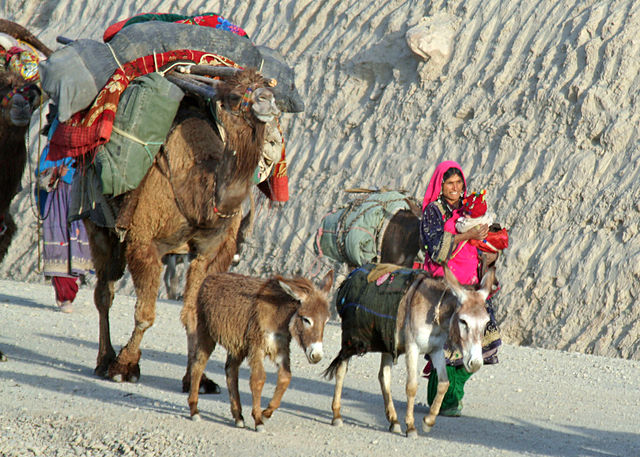Nomadic vs Sedentary
There exists a significant distinction in the lifestyles of Nomadic and Sedentary societies. Nomadic societies do not have permanent settlements and instead, travel from one location to another. This contrasts with Sedentary societies, which are permanently settled in one place and do not move around. In the modern world, a sedentary lifestyle has become the prevailing way of life. This article will explore the differences between these two cultures.
What is a Nomadic Lifestyle?
Nomadic people do not establish permanent settlements and instead, travel from one place to another. They can either belong to hunting and gathering societies or pastoral societies. Hunting and gathering communities move to various places in search of food, such as wild animals or plants. In the case of pastoral societies, the need for travel mainly stems from owning livestock, such as large herds of sheep, goats, cattle, yaks, horses, or camels.
In certain regions, a nomadic lifestyle is necessary due to infertile land, ice, sand, etc., which makes it essential for people to travel to adapt to these circumstances. Nomads typically build small tents when they find a suitable place for temporary settlement. They usually travel in groups formed by the integration of families or tribes, with elders or a chief making decisions for the entire group.
What is a Sedentary Lifestyle?
A sedentary lifestyle, also known as sedentism, is a society or way of life where people are permanently settled in one place and do not travel from one place to another. For sedentary societies, finding fertile land to settle on is crucial to growing crops and raising livestock. These societies have more permanent settlements, such as houses and storage buildings, and require preservation methods and storage techniques, unlike nomads.
Sedentary societies first emerged near waterways, such as rivers, which allowed them to cultivate crops and develop various methods and techniques to improve their farming capabilities. However, sedentism has certain disadvantages, such as the spread of infectious diseases, waste disposal problems in cultivation, and the need for fertile land.
What is the difference between Nomadic and Sedentary?
• Definition of Nomadic and Sedentary:
– Nomadic people travel from one place to another and do not establish permanent settlements.
– A sedentary lifestyle, or sedentism, refers to a society or way of life where people are permanently settled in one place.
• Type of Society:
– Nomadism includes hunting and gathering societies.
– Sedentism involves cultivation.
• Fertility of Land:
– Nomads are not as concerned with the fertility of the land since they travel.
– Fertility of land is a significant issue for sedentary cultures.
• Waste disposal and diseases:
– Waste disposal and diseases can affect sedentary societies much more than nomads.
• Settlements:
– Nomads do not build settlements, such as houses, and are content with tents.
– Sedentism involves building houses, storage units, etc., which ensure better shelter.
Key Takeaways
- Nomadic societies travel from place to place and do not establish permanent settlements, while sedentary societies are permanently settled in one location.
- Nomadism includes hunting and gathering societies, whereas sedentism involves cultivation and agriculture.
- Sedentary societies face challenges with waste disposal, disease, and the need for fertile land, while nomadic societies are less affected by these issues.
